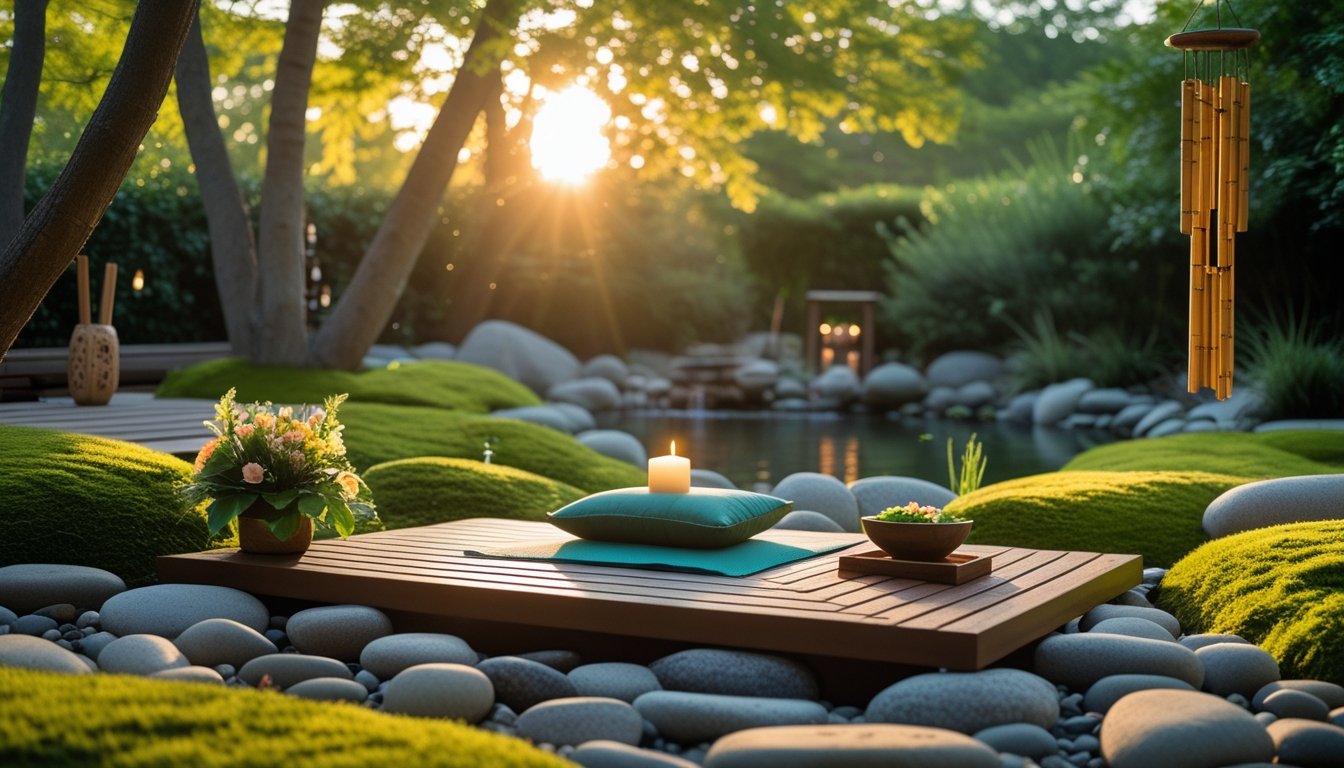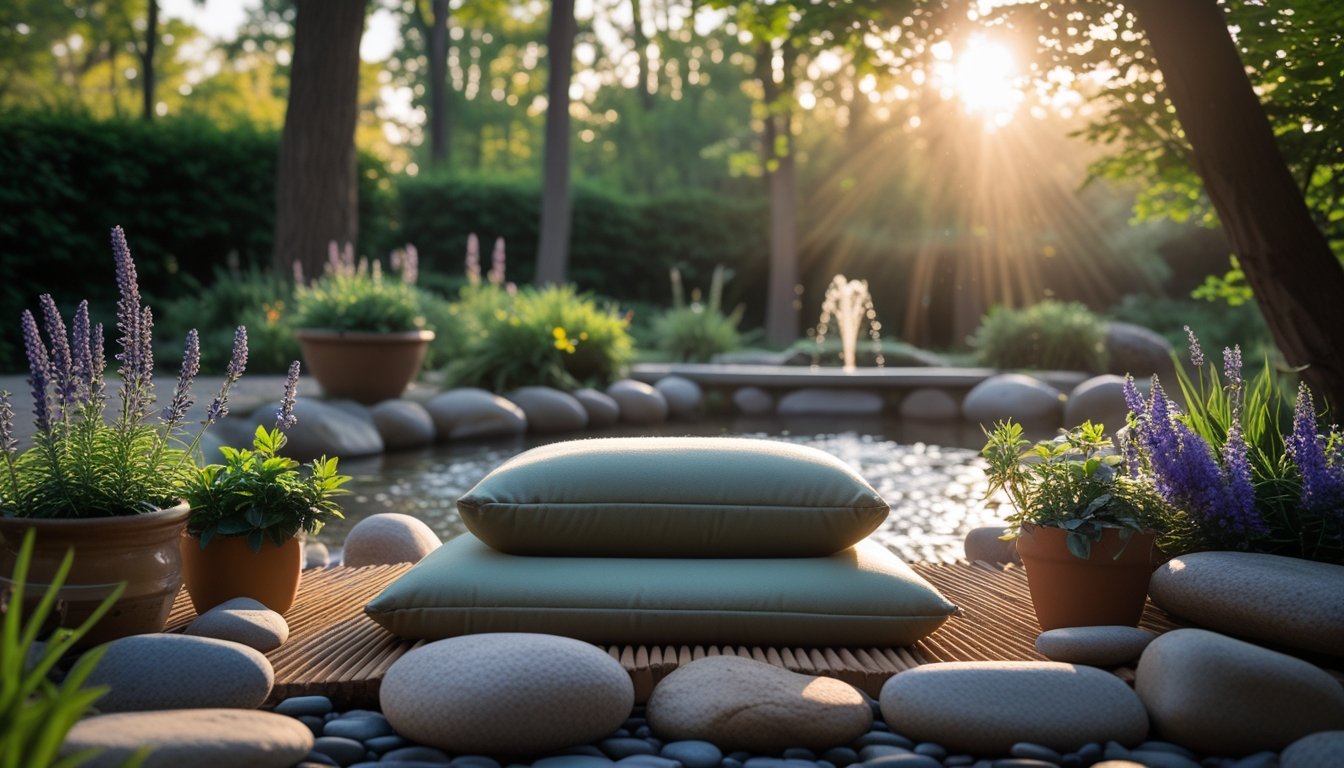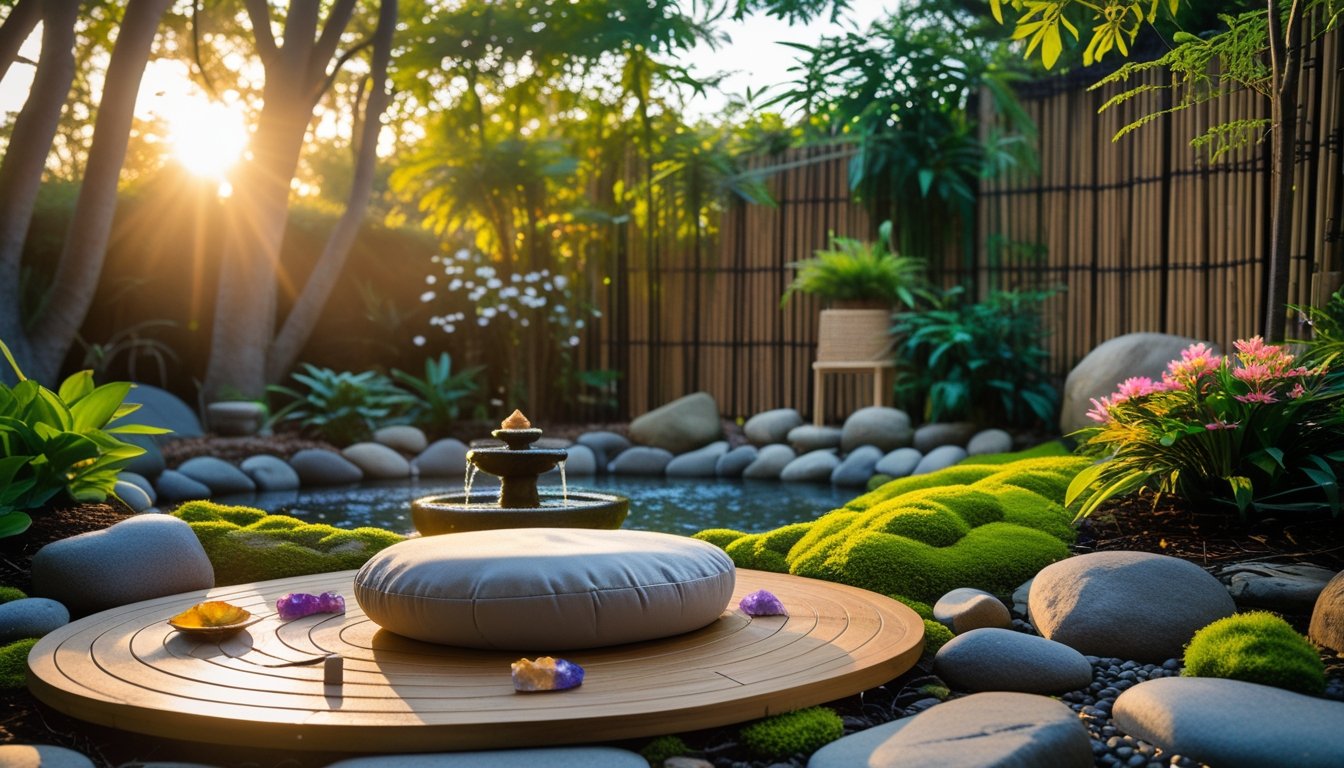Late updated: 02 Aug 2025 12:08
Written by: James Whitaker
How To Create An Outdoor Meditation Space: A Step-by-Step Guide
Creating a personal outdoor meditation space can be transformative, offering a tranquil sanctuary where one can retreat for mindfulness and relaxation. Identifying the right location is crucial—opt for a quiet corner of your garden or yard that naturally invites calmness and peace. Elements of nature, such as plants, water features, or natural light, play a significant role in enhancing the ambience of this space.

Integrating personal touches can further enrich this environment. Consider using spiritual symbols meaningful to you, such as statues or prayer flags. Incorporate comfortable seating options and ambient lighting to make the space inviting. Selecting subtle scents through candles or diffusers can also elevate your meditative experience, allowing you to connect deeply with your surroundings.
Designing an outdoor meditation space involves creativity and personal preference. Whether you have a sprawling backyard or a small balcony, creating a purposeful meditation retreat will elevate your practice and make mindfulness a cherished part of daily life.
Key Takeaways
- Select a peaceful location with natural elements.
- Add personal touches and comfortable seating.
- Enhance the space with scents and ambient lighting.
Essential Steps to Design Your Outdoor Meditation Space
Designing a peaceful meditation space outdoors involves choosing a suitable location, ensuring privacy, and clearly defining the purpose of the zone. Each step significantly contributes to creating a sacred space that promotes mindfulness and peace.
Selecting an Ideal Location
Finding the perfect spot is vital. It should be a place where we can connect deeply with nature and minimise distractions. Choosing a spot surrounded by natural elements—such as trees, water features, or gardens—can enhance tranquillity.
Consider the sunlight’s path. A location with soft morning light or dappled shade throughout the day offers comfort. Noise levels matter, too. If nearby traffic or neighbourhood sounds are a concern, we may use natural sound barriers like hedges for noise reduction.
A flat, stable ground is essential for safety and ease. It should be accessible and comfortable for our meditative practices, be it sitting, standing, or walking. This foundation helps set the tone for our outdoor meditation space, ensuring maximum effectiveness during mindfulness sessions.
Creating Privacy and Shelter
Privacy is crucial in maintaining a peaceful meditation space. Fences, tall plants, or trellises lined with climbing plants can create a shield from neighbours and passers-by. Such structures not only offer seclusion but also add to the natural aesthetics of the environment.
We might also consider adding a pergola or gazebo. These provide shelter from rain or intense sunlight and establish a dedicated area for our outdoor meditation. The structure can evoke a sense of sacredness, defining the specialness of the space.
When focusing on privacy, incorporating wind chimes or gentle water features can mask surrounding noises, fostering an even quieter experience for mindfulness practices. This allows us to immerse ourselves in meditation without external interruptions.
Defining the Meditation Zone
To establish a clear meditation zone, creating boundaries is key. This can be achieved with stones, pathways, or changes in ground texture. The use of natural materials not only defines the space but also blends harmoniously with the outdoor setting.
Comfort is another priority. Providing cushions, benches, or mats ensures we can maintain a meditative posture with ease. Seating arrangements can be adapted to our preferred meditation styles, whether sitting in silence or engaging in walking meditation.
Adding elements like soft lighting, minimal décor, or meaningful symbols enhances the environment. These elements contribute to a serene and personalised sacred space, encouraging consistent and fulfilling meditation practices in our outdoor sanctuary.
Key Elements to Enhance Your Outdoor Meditation Experience

Creating an outdoor meditation space requires thoughtful attention to seating comfort, integration of natural features, and the augmentation of sensory experiences. These elements together can transform any outdoor area into a sanctuary for mindfulness and reflection, ensuring each session is restorative.
Thoughtful Seating and Comfort Solutions
Selecting appropriate seating can significantly elevate our meditation experience. Meditation cushions offer durability and provide a comfortable, supportive base for seated practices. For more luxury, consider outdoor pallet furniture adorned with weather-resistant cushions.
An outdoor rug can mark the meditation area, bringing in a splash of colour and warmth. During sunnier days, shade sails or meditation tents can offer protection against the elements, ensuring our focus remains undisturbed by harsh weather. The essence lies in creating a personal, inviting haven.
Natural Features and Greenery
Integrating nature into our meditation space can enhance feelings of peace and grounding. A simple rock garden or zen garden can provide a visual focal point, while a container garden sanctuary brings lush life into the space with succulents and potted plants.
Adding vertical features like a vertical garden can maximise space and privacy. Aromatic herbs such as lavender, climbing jasmine, and ornamental grasses can uplift our senses with their natural fragrance and beauty. This not only beautifies the space but also acts as a natural sound barrier, enhancing our meditation focus.
Enhancing Sensory Experiences
Creating a sensory-rich environment can deepen our meditation moments. Incorporating soft nature sounds, perhaps through a natural sound barrier or gentle wind chimes, can promote relaxation. A small water feature, like a cascading fountain, provides a soothing backdrop, mimicking natural serene environments.
For tactile stimulation, walking meditation paths incorporated with varied textures such as stones or sand can be a mindful addition. Arresting scents from herbs like lavender and jasmine can enhance our sensory experience, binding together the elements of sight, sound, and smell to form a holistic meditation retreat.
Frequently Asked Questions

Creating an outdoor meditation space involves considering essential elements, optimising space, selecting suitable plants, and ensuring privacy. Additionally, enhancing year-round usability and creating a calming atmosphere contribute significantly to the effectiveness of the meditation area.
What are the essential elements needed for a meditation garden?
In crafting a meditation garden, incorporating natural elements like plants, stones, water features, and earthy textures can be beneficial. Comfortable seating and gentle lighting also create a conducive environment for relaxation and mindfulness. Designing the space with personal touches, such as meaningful items or symbols, adds to the serenity.
How can one design a meditation space in a limited outdoor area?
Even in a compact area, effective design strategies can create a serene meditation space. Vertical gardens or potted plants utilise limited ground space efficiently. Selecting foldable or modular seating solutions enhances functionality while maintaining comfort. Prioritising elements such as compact water features or minimalistic decor can sustain tranquillity without requiring substantial space.
What type of plants are best suited for a tranquil meditation garden?
Opting for plants with calming aesthetics and subtle fragrances can enhance tranquillity. Lavender, jasmine, and bamboo are popular choices for their soothing qualities. Additionally, native plants that thrive in local conditions may require less maintenance, allowing us to focus on mindfulness rather than gardening chores.
In what ways can privacy be optimised for a backyard meditation area?
Establishing privacy is crucial in maintaining focus. Utilising natural barriers such as hedges or bamboo screens can shield our space from outside distractions. Strategic placement of planters, trellises, or gazebos can further create a private retreat. Ensuring privacy optimises the meditation experience and invites deeper relaxation.
What are some effective techniques for creating a calming atmosphere in an outdoor meditation space?
To cultivate a calming atmosphere, focus on sensory elements. Incorporating soft ambient lighting and plants that sway in the breeze can provide visual peace. Sound features, like wind chimes or water fountains, introduce soothing auditory elements. Adding scents via herbs or candles further enriches the sensory experience, establishing a serene environment.
Which features enhance the functionality of a meditation space for year-round use?
Adapting the meditation space for all seasons is essential. Consider weather-resistant seating, canopies for shade, or windbreaks for cold months. Integrating flexible lighting options accommodates various times of day and weather conditions. By making these adjustments, we ensure ongoing practice throughout the year.
